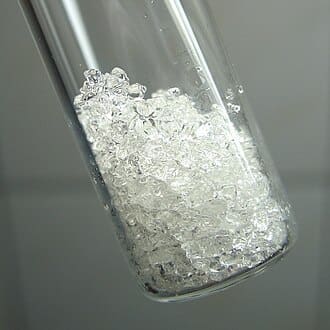
Acidum carbolicum
Latin name: Acidum carbolicum
Short name: Carbol-ac
Common name: Carbolic Acid | Phenol | Hydroxybenzene | Phenic Acid | Benzophenol
Primary miasm: Sycotic Secondary miasm(s): Syphilitic
Kingdom: Minerals
Family: Organic chemical – Aromatic phenol derivative
- Symptomatology
- Remedy Information
- Differentiation & Application
An aromatic organic compound (C₆H₅OH) obtained originally from coal tar, now produced synthetically. Appears as colourless crystals or a colourless to pinkish liquid, with a distinctive tar-like odour. Used in dilute solutions as a disinfectant, antiseptic, and anaesthetic. The homeopathic remedy is prepared by dilution and succussion from pure phenol.
Extensively used as a powerful antiseptic and disinfectant since Joseph Lister’s pioneering use in surgery. Also used in industrial synthesis of plastics (Bakelite), dyes, and pharmaceuticals.
First introduced and partially proved by Dr. Samuel Swan (USA) in the late 19th century; further pathogenetic and toxicological data gathered from accidental poisonings and clinical experience [Allen, Clarke].
- Nervous system – Rapid paralysis, numbness, anaesthesia; sudden collapse [Hering].
- Mucous membranes – Ulceration, putrid discharges from mouth, throat, and genitals.
- Gastrointestinal tract – Acrid, corrosive action leading to intense inflammation and destruction of tissue.
- Skin – Burns, necrosis, and gangrene from topical exposure.
- Blood – Septicaemia, profound sepsis with rapid collapse.
- Urinary tract – Irritation and suppression of urine; urine dark, smoky from haemoglobinuria.
- General vitality – Marked prostration, septic states, offensive discharges.
- Rest in a warm, quiet environment.
- Hot applications to local pain.
- Fresh air in cases of septic headache.
- Motion, especially rapid movement.
- Cold drafts and dampness.
- Touch or pressure on affected parts.
- Evening and night.
- Exposure to putrid or offensive odours.
- Arsenicum album – Offensive discharges, prostration, burning pains; but Arsenicum’s anxiety and restlessness more marked.
- Baptisia – Septic fevers with foul discharges; more besotted mental state and prostration.
- Pyrogenium – Septicaemia with high fever, restlessness; Carbol-ac more rapid collapse, less reactivity.
- Kreosotum – Offensive discharges, ulcerations; Kreosote more haemorrhagic tendency.
- Complementary: Baptisia, Pyrogenium.
- Antidotes: Alcohol, strong coffee, Camphor (to phenol poisoning).
- Follows well: Arsenicum album, Mercurius corrosivus in septic conditions.
A profoundly septic, destructive, low-reactive remedy for states of collapse and putridity. It is suited where the organism seems overwhelmed by toxic influence, with offensive discharges, rapid tissue breakdown, and paralysis of both mind and body. The keynote is sudden prostration with foetid emanations and sloughing ulceration.
- Useful in puerperal septicaemia when collapse is imminent.
- Beneficial in sloughing ulcers and gangrene from burns or chemical injury.
- In choleraic collapse with offensive stools and suppressed urine.
- Valuable in septic sore throat with grey sloughs and putrid odour.
Mind:
- Delirium, low muttering, septic fever.
- Loss of memory for words.
Head:
- Headache with septic odour from mouth.
- Occipital pain, worse movement.
Mouth/Throat:
- Offensive breath, septic ulceration.
- Grey sloughs in pharynx.
Stomach:
- Vomiting of brown, offensive matter.
- Burning in stomach.
Skin:
- Gangrenous ulceration.
- Sloughing burns.
Generalities:
- Septicaemia, rapid collapse.
- Offensive discharges.
- Swan, S. – First proving records, late 19th century.
- Allen, T.F. – Encyclopaedia of Pure Materia Medica: Toxicological symptoms, gastric and nervous collapse.
- Clarke, J.H. – Dictionary: Septic states, clinical indications.
- Hering, C. – Guiding Symptoms: Mouth, throat, skin, and septic conditions.
- Kent, J.T. – Lectures: Collapse, putridity, low reactive power.
- Boericke, W. – Pocket Manual: Antiseptic remedy for sepsis and putridity.
- Farrington, E.A. – Clinical MM: Septic fevers, puerperal septicaemia.
- Hughes, R. – Cyclopaedia: Pharmacological commentary on phenol’s toxic action.
- Lippe, A. – Clinical confirmations in low vitality septic states.
- Nash, E.B. – Leaders: Rapid collapse in septic conditions.
